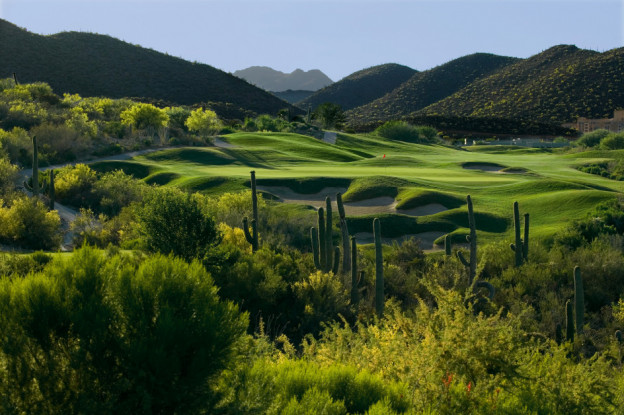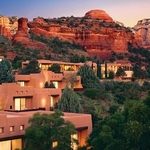Andy Mossack plays golf at Tucson’s premier golf resort. The Club at Starr Pass.
As if playing desert golf wasn’t challenging enough, I had a herd of mule deer to contend with, grazing right in the middle of the 12th fairway. Luckily, I hit a great tee shot down the middle, and like the parting of the Red Sea, the herd politely made way as the ball rolled by. They are very cute though, and I know, if they could have, they would have applauded me as I walked towards them.
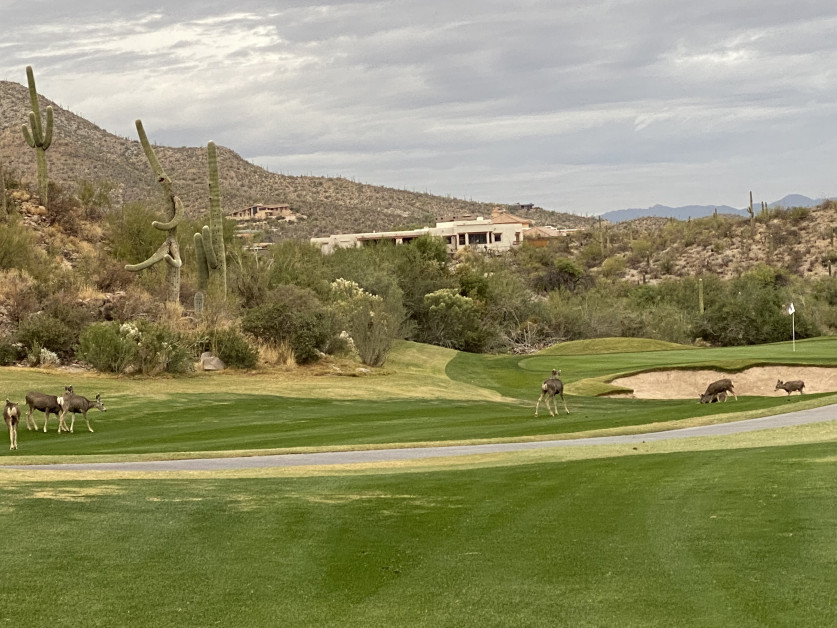
The Club at Starr Pass is a remarkable set up. 27 championship holes in three nine-hole loops around the Tucson Mountain range and suitable named after the rugged wilderness; Rattler, Coyote, and the Palmer course, designed by the great man himself. Now under the expert management of Troon, the three courses compliment an impressive luxury Sonoran Desert resort development complex capped by the JW Marriott Starr Pass Resort & Spa.
The courses have their own slice of history too, meandering along trails carved out over 120 years ago by the Richard Starr Stagecoach Line, carrying passengers to Quijota, a mining boomtown 70 miles away. Today, that route is the signature 6th hole on the Coyote course. Previously The Club at Starr Pass was called TPC at Starr Pass and regularly hosted the Tucson Open with golfing legends Arnold Palmer, Phil Mickelson, Payne Stewart and Nancy Lopez walking these fairways.
Just like links or parkland golf, a desert landscape brings its own unique set of challenges, (aside from mule deer of course). Go off the fairway and you’re facing rocks, brush, wildlife, dense vegetation and of course, Southern Arizona’s unique saguaro cactus, which is held in such esteem it is a protected species.
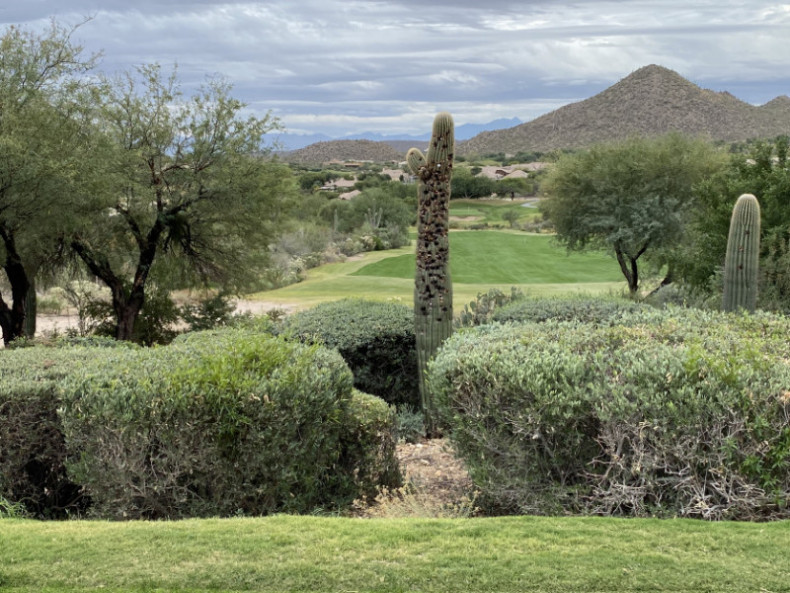
They are only allowed to be moved under special circumstances, which means many of the holes here feature saguaros standing in front of your line. And many of them carry battle scars from wayward shots – and, echoes of woe from players past no doubt.
Looking for a proper desert challenge, I was nudged towards the Rattler and Coyote courses 3,520 yards par 37, and 3,431-yards par 36 respectively off the gold tees.
And they did not disappoint.
Most of the tees are elevated with some outstanding views of the mountains and hills way above Tucson. With the rolling terrain, there’s also plenty of daunting semi-blind shots over cactus, trees and steep gulleys. I found the greens to be quick, with plenty of contours to navigate, so you have been warned.
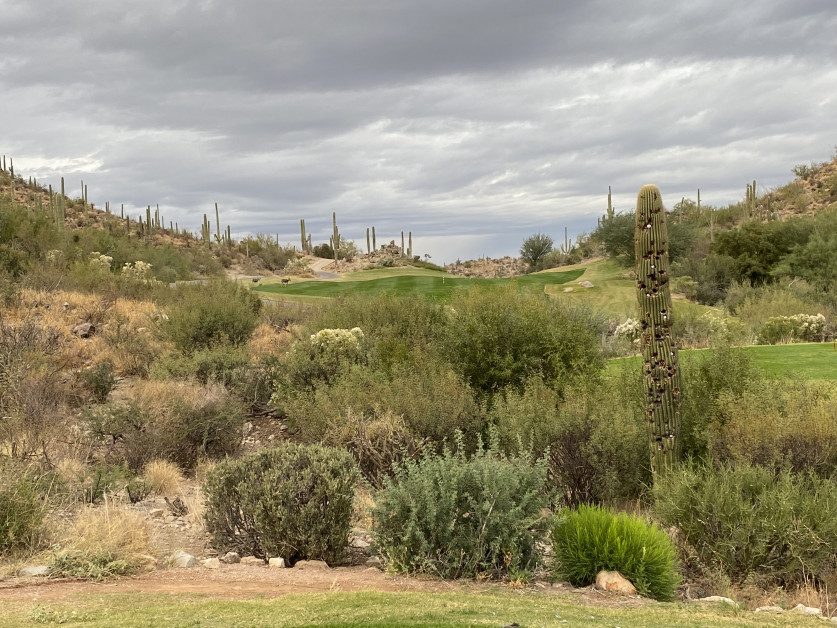

I had my fair share of memorable holes too. On the Rattler, the drives at the second and fourth had to be accurate otherwise you would struggle to score. The fifth was interesting because it had a split fairway. The old golfing adage risk v reward came into play here.
The tricky fourth hole on Coyote was particularly challenging for me. A dog leg left tempted me to try and take it on which failed miserably. So keeping another drive to the right, left me with another risky shot along a narrow fairway. It fell short, as did my chip, which dived headfirst into a huge greenside bunker. Hey ho. I felt the neat line of saguaros all laughing at me as I wandered past head hanging low. They had no doubt seen it all many times before.

As had those mule deer who I encountered on the next fairway. If nothing else, saying hello to the local wildlife is a always a pleasant distraction to a bad round.
The Club at Starr Pass is a wonderful feast of desert golf, but perhaps high handicap golfers might find the Palmer course a little less stressful. All in all, this is a Tucson jewel if you are looking for a resort that has an exceptional hotel and spa, outstanding golf, and plenty of hiking trails to explore around the Tucson National Park.
All images (C) Andy Mossack except feature image and golf player (C) Club at Starr Pass.
Tell me more about The Club at Starr Pass
The Club at Starr Pass 3645 W. Starr Pass Blvd Tucson, AZ 85745
T: 520-900-8210 E: info@theclubatstarrpass.com
Rounds from $40 in the off peak season (May-Sep) and $75 in peak season (Oct-Apr)

